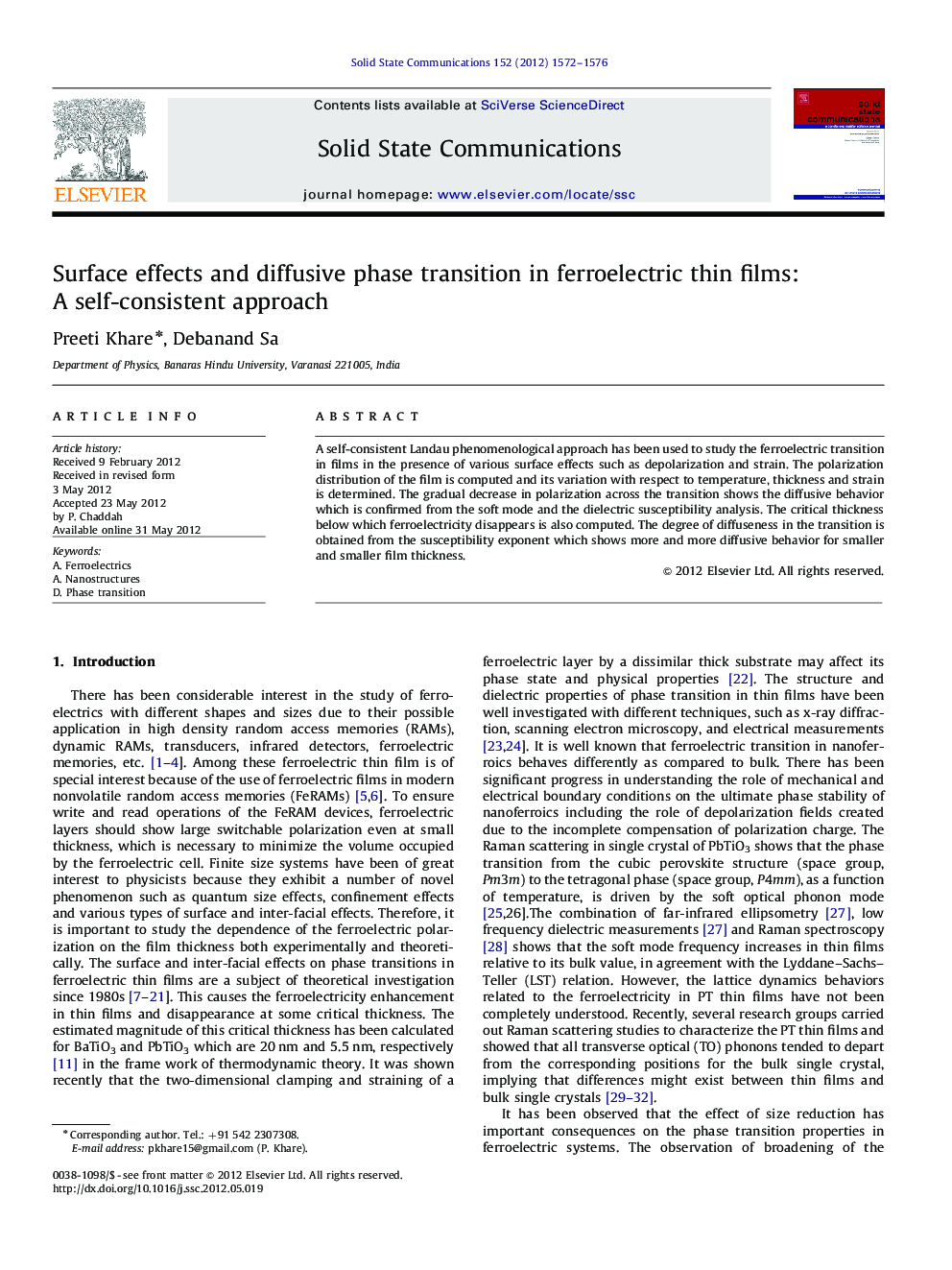| Article ID | Journal | Published Year | Pages | File Type |
|---|---|---|---|---|
| 1592652 | Solid State Communications | 2012 | 5 Pages |
A self-consistent Landau phenomenological approach has been used to study the ferroelectric transition in films in the presence of various surface effects such as depolarization and strain. The polarization distribution of the film is computed and its variation with respect to temperature, thickness and strain is determined. The gradual decrease in polarization across the transition shows the diffusive behavior which is confirmed from the soft mode and the dielectric susceptibility analysis. The critical thickness below which ferroelectricity disappears is also computed. The degree of diffuseness in the transition is obtained from the susceptibility exponent which shows more and more diffusive behavior for smaller and smaller film thickness.
► This paper is an extension of the self-consistent approach to study the ferroelectricity in ferroelectric thin film in the presence of the surface effects such as depolarization field and strain field. ► We solve the Euler–Lagrange boundary value problem for polarization distribution using proper boundary condition. The average polarization versus thickness, strain as well as their temperature dependences are computed self-consistently. ► In a similar way, the temperature dependent susceptibility is computed self-consistently which shows a broad peak. ► The polarization never attains zero value across the transition showing the diffusive behavior. This is confirmed from the behavior of soft mode as well as susceptibility. ► The critical thickness as well as the temperature dependence of soft mode frequency is discussed. The soft mode frequency vanishes in a small temperature window in the vicinity of the transition which is in accordance with the finite polarization across the transition. ► The above behavior could be due to the fact that the susceptibility profile broadens which could be an indication of diffusive behavior. ► The measure of diffusivity is calculated from the susceptibility exponent which compares very well with the experimentally observed spectrum in doped PbTiO3.
